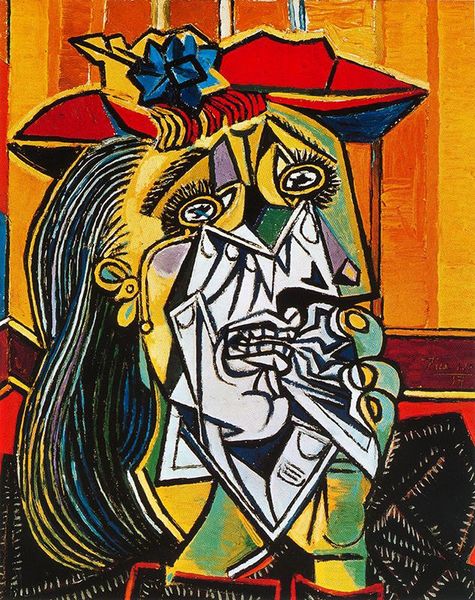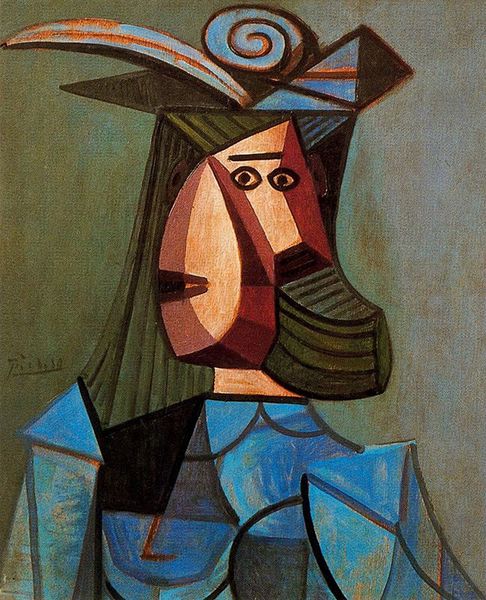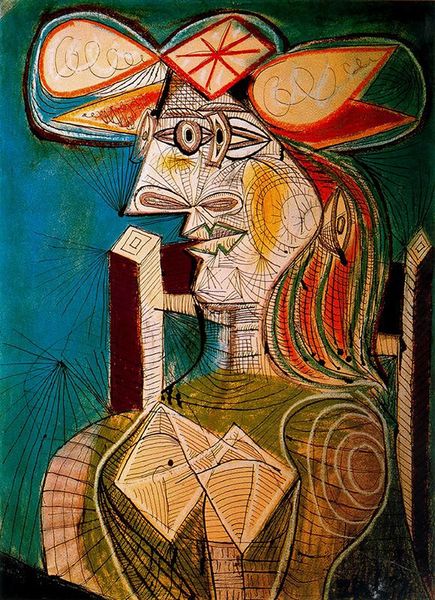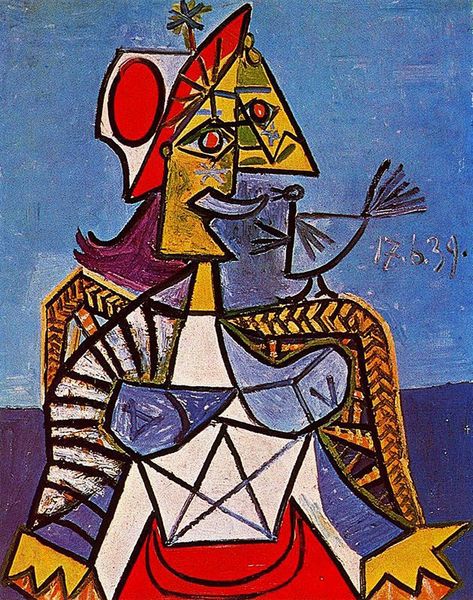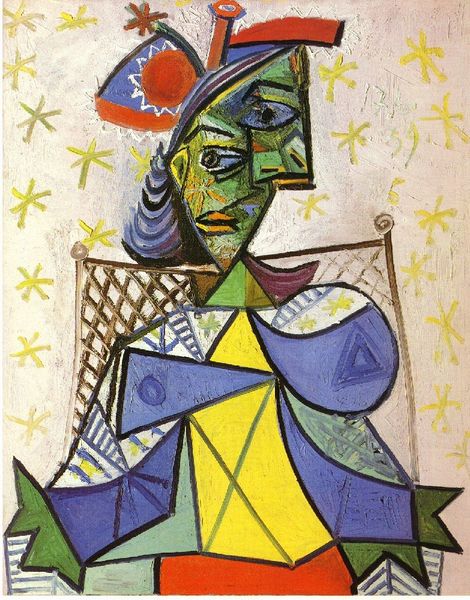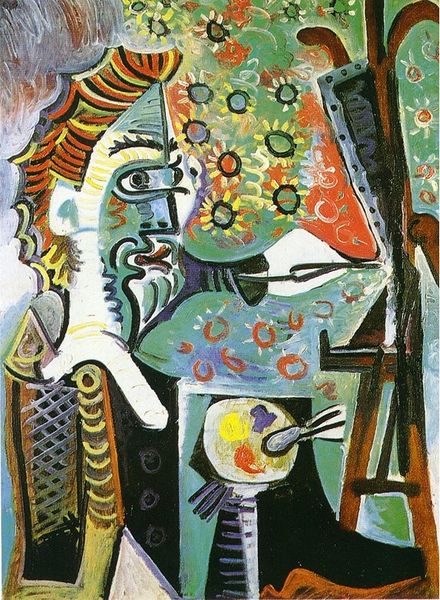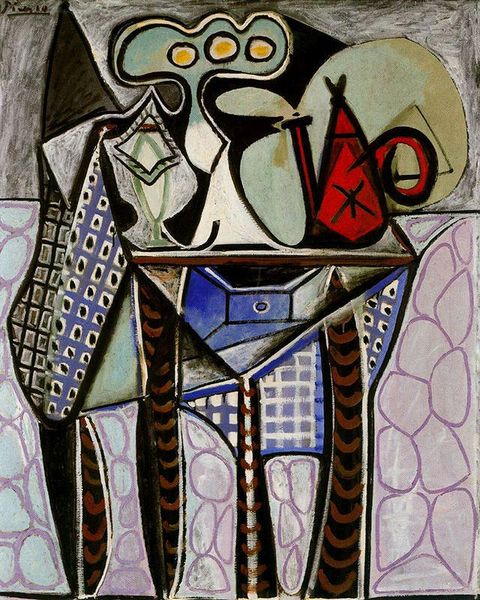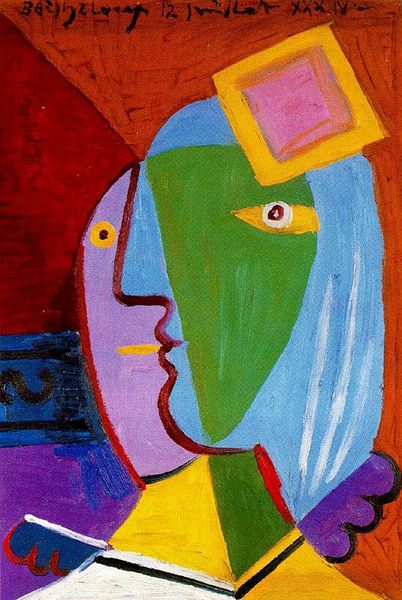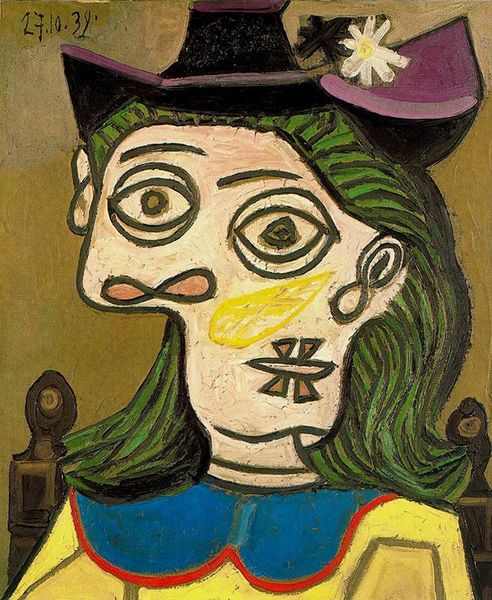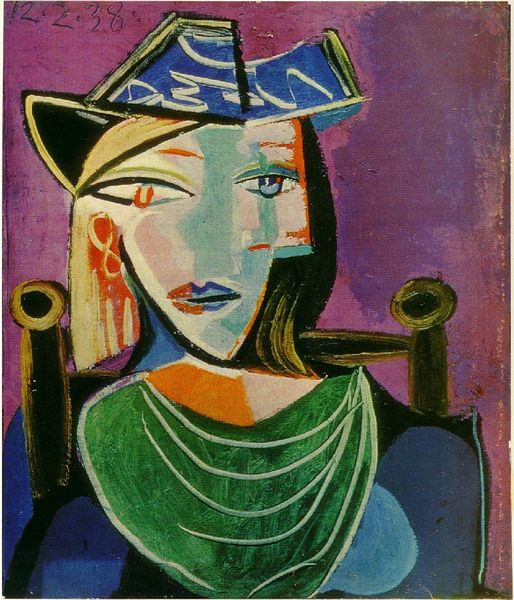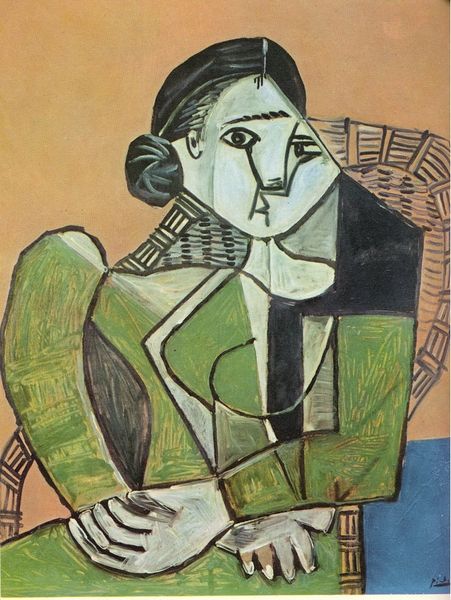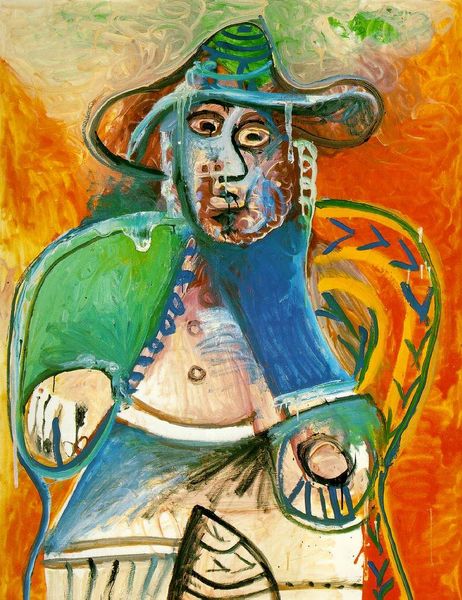
Copyright: Pablo Picasso,Fair Use
Curator: What strikes me first is the disquiet—she looks almost imprisoned by the very chair meant to support her. There’s something fractured in her gaze, or rather gazes. Editor: Indeed. We're looking at Pablo Picasso's 1941 painting, "Woman Sitting in an Armchair." Its style is definitively cubist, and yet there's an undeniably expressionist, even fauvist edge to it with the heightened colors and distorted form. Curator: Ah, yes. See how those acid greens and vibrant blues collide? He's using color not to describe, but to *feel*. You know, it almost screams of wartime anxiety. 1941—the thick of it. Perhaps she's waiting, worrying...that tilted head, like a broken bird. Editor: Structurally, the planes of color delineate form in a way that both reveals and conceals. Observe how the figure is deconstructed into geometric elements. Note also how Picasso undermines traditional perspective; it's about presenting multiple viewpoints simultaneously, right? We see not just what is, but what might be. Curator: It feels intensely personal, almost voyeuristic, as though we’re catching a glimpse into her very soul. You sense a deep sadness—perhaps she has lost someone she loves, a mother, a brother, even a partner. This woman doesn't merely sit; she embodies sorrow. Editor: Her eyes... they command our attention, don't they? Asymmetrical and unnervingly direct. A brilliant tactic to draw us into the psychological depth of the subject through the language of semiotics—the eyes as a signifier for inner turmoil. But is it truth, or a constructed reality imposed by the artist's own psyche? Curator: I think, at this moment, the truth, or, shall we say, the semblance of it, becomes a vehicle of expression, and therefore, more poignant than the reality from which Picasso derived inspiration. She will always sit, suspended, vulnerable in that armchair. Editor: The painting achieves a kind of spatial tension, I would argue. The compression of form, and of figure within the frame, really emphasizes a sense of interiority, both the figure's internal state and also within an almost stage-like construct. Well, whatever narrative whispers this prompts in viewers is valid; thank you.
Comments
No comments
Be the first to comment and join the conversation on the ultimate creative platform.
